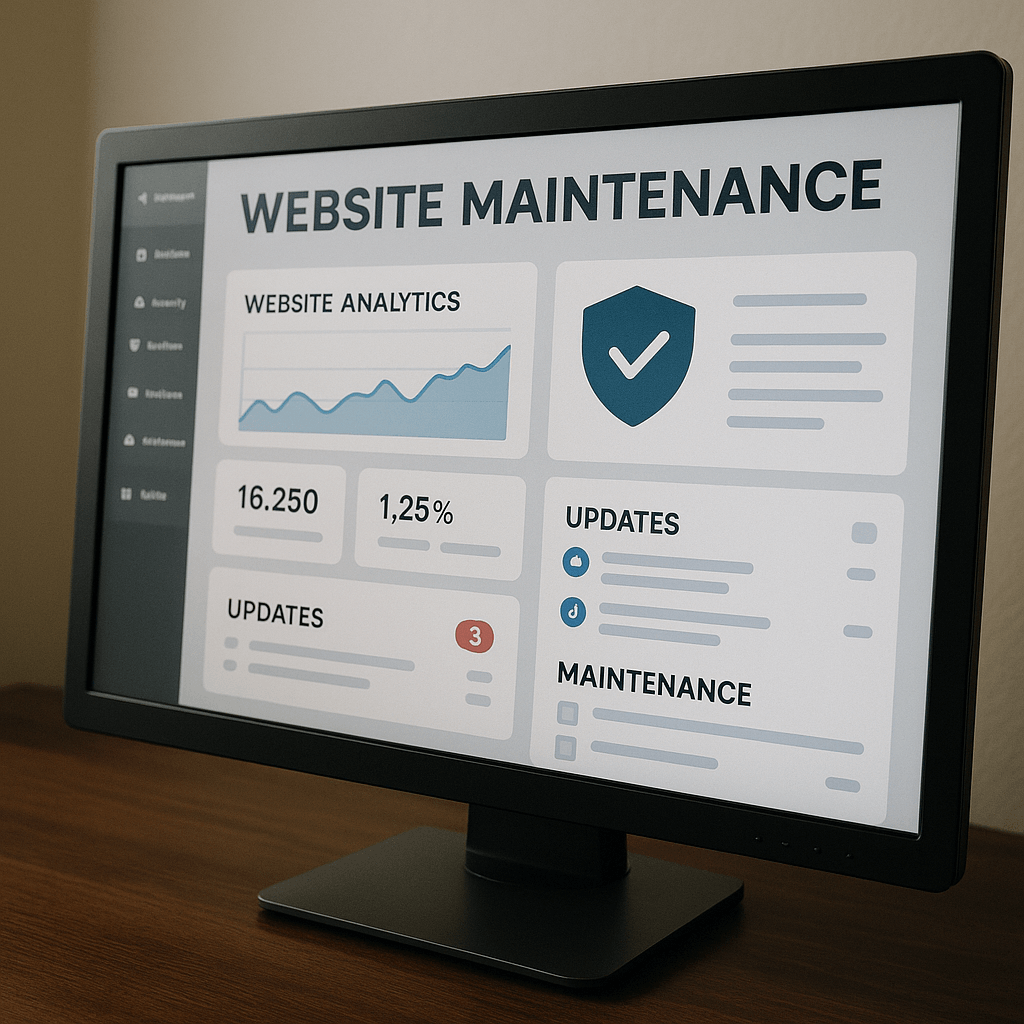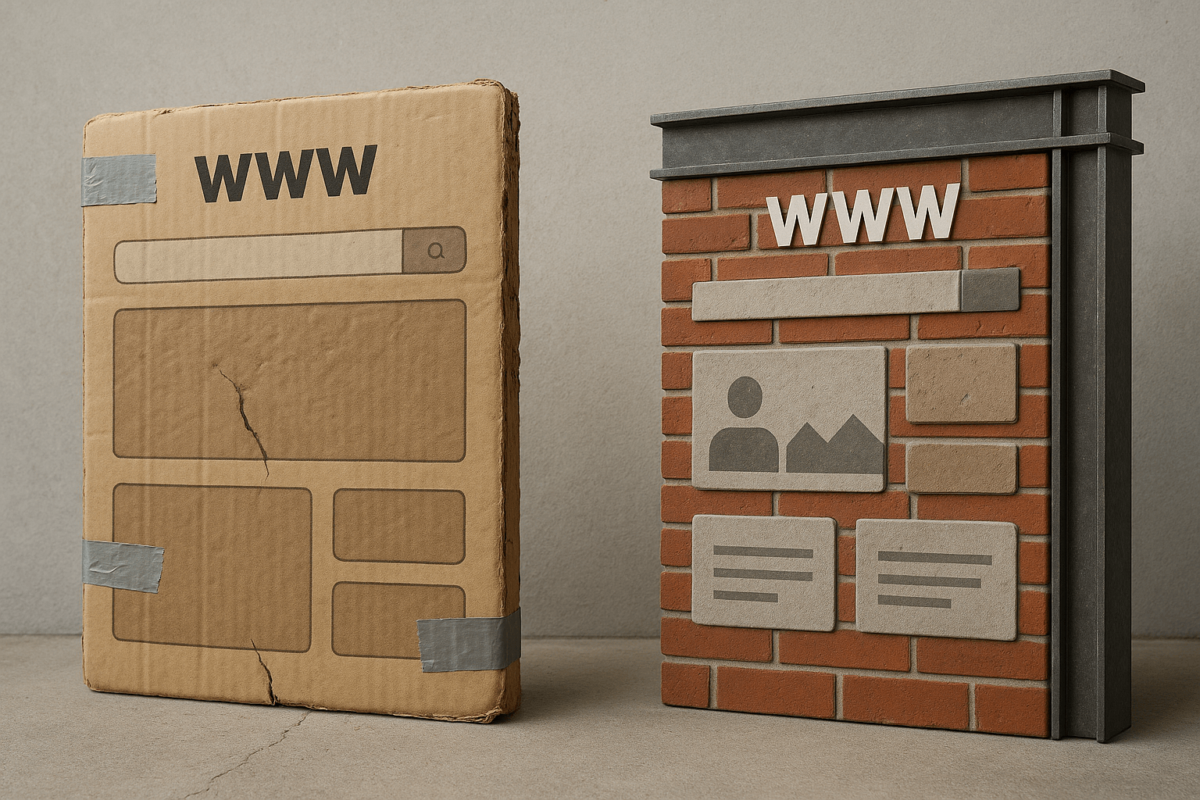The best way to avoid a website design scam is to make sure to study designer’s portfolio, read reviews and testimonials, and ask for a detailed contract outlining deliverables, timelines as well as payment terms.
In today’s digital landscape, having a professional website is crucial for any business owner looking to establish an online presence. However, the web design industry is not without its pitfalls. Many individuals and companies fall victim to web design scams that can lead to wasted time and money.
This article will explore common web design scams, how to verify the identity of a web designer, and what to look for in a reliable web design service. Additionally, we will discuss the risks associated with hiring an unsecure web designer and provide tips on how to avoid getting scammed when needing a website.
This article is a part of the series of Ultimate Guide to Hiring a Web Designer for Your Small Business Website in 2025.
What Are Common Web Design Scams to Beware Of?
Understanding the Most Frequent Design Scams
As a business owner, it is essential to be aware of the most common web design scams that can jeopardize your website project. One prevalent scam involves freelancers or agencies that promise a professional website for an unbelievably low price. Often, these offers sound too good to be true, and the end product may include an outdated design or poorly functioning website.
Another frequent scam involves web design scammers who request an upfront payment without delivering any work or providing a satisfactory portfolio. These scammers often disappear after receiving payment, leaving clients with an incomplete website or no website at all.

Identifying Red Flags in Website Design Offers
When seeking design services, it is vital to identify red flags that may indicate a scam. One significant red flag is a lack of transparency regarding pricing and deliverables. If a web designer is unwilling to provide a detailed breakdown of costs or the specific services included, it is advisable to proceed with caution.
Additionally, be wary of designers who pressure you into making quick decisions or require upfront payments without a contract. A reliable web designer should be willing to discuss their process, answer your questions, and provide testimonials from past clients.
How Scammers Operate in the Web Design Industry
Scammers in the web design industry often use various tactics to lure unsuspecting business owners. They may create fake portfolios showcasing impressive work that they did not actually complete. Some scammers even go as far as to impersonate well-known design firms to gain credibility.
By understanding how these scammers operate, you can better protect yourself from falling victim to their schemes. Always take the time to research a designer’s background and verify their identity before committing to any agreements.
How Can I Verify the Identity of a Web Designer?
Steps to Verify a Web Designer’s Credentials
Verifying a web designer’s credentials is a crucial step in ensuring you engage with a reputable professional. Start by checking their website for a portfolio that showcases their previous work. A good portfolio should include a variety of projects that demonstrate their skills in responsive design and user experience.
Additionally, look for any certifications or affiliations with recognized design organizations that can provide further validation of their expertise. If possible, reach out to them directly to discuss your project and gauge their responsiveness and professionalism.
Importance of Checking Previous Work and Testimonials
Before hiring a web designer, it is essential to check their previous work and read testimonials from past clients. A reliable designer will have a collection of successful projects that align with your vision and needs. Testimonials can provide insight into the designer’s work ethic, communication style, and ability to meet deadlines. If a designer has numerous positive reviews, it is a good indicator that they are trustworthy. Conversely, a lack of testimonials or negative feedback should raise a red flag.
In my personal experience, what I would recommend is that whenever working with reviews and testimonials from past clients always feel free to ask for their contact information. This way you can easily reach out to them with any questions regarding the specific work that was done or any challenges that have been faced throughout the process. It will also definitely help you understand whom you are further working with and even make a final decision.
Ways to Confirm a Designer’s Reputation Online
In the digital age, confirming a designer’s reputation online is easier than ever. Utilize platforms like LinkedIn, Google Reviews, and design-specific forums to gather information about the designer. Look for feedback from previous clients that discuss their experiences with the designer’s services.
Social media can also be a valuable tool for assessing a designer’s reputation; check their engagement with followers and the quality of the content they share. By conducting thorough research, you can make an informed decision and avoid web design scams.
Personally, I had a case when I was in doubt, hence, I asked a designer to arrange a FaceTime meeting to talk about the work that needs to be done. However, the designer refused to do so by telling me to discuss everything in the chat and did not show up after that. Later on, it turns out to be that he was using a fake accaunt showcasing somebody else’s works.
Therefore, if you are concerned about the designer, don’t hesitate to arrange a work meeting or a FaceTime if the person is distant, in order to verify the credibility of the person before proceeding.
What Should I Look for in a Reliable Web Design Service?
Key Features of Trustworthy Website Design Services
When searching for a reliable web design service, there are several key features to consider. A trustworthy designer should offer a comprehensive range of services, including website development, maintenance, and support.
Look for a designer who emphasizes the importance of user experience and responsive design, ensuring that your website functions seamlessly across all devices. Furthermore, a good designer will be open to collaboration and will actively seek your input throughout the design process to ensure your vision is realized.
How to Assess a Web Designer’s Portfolio
Assessing a web designer’s portfolio is crucial in determining their suitability for your project. Look for diversity in their work, including different styles, industries, and functionalities. A strong portfolio should showcase not only the aesthetics of the websites but also their performance, such as fast loading times and effective search engine rankings.
Pay attention to the user experience; a well-designed website should be intuitive and easy to navigate. If possible, ask to see case studies that outline the challenges faced and the solutions implemented in their past projects.

Questions to Ask Before Hiring a Web Designer
Before hiring a web designer, it’s essential to ask pertinent questions that can reveal their expertise and approach. Inquire about their design process and how they handle revisions and feedback. Ask about their experience with SEO and how they ensure that the websites they create are optimized for search engines.
Additionally, discuss timelines and expectations to avoid any misunderstandings down the line. A professional web designer will appreciate your inquiries and provide clear, honest answers that help you gauge their capability.
What Are the Risks of Hiring an Unsecure Web Designer?
Understanding the Dangers of Incomplete Websites
Hiring an unsecure web designer can lead to significant risks for your business. Incomplete websites may lack essential features, leading to poor user experience and potentially driving customers away. An unfinished website may also be vulnerable to security breaches, exposing your business and clients to fraud. Moreover, an incomplete website can hinder your online presence, negatively impacting your search engine rankings and overall brand reputation.
How Unsecure Designs Can Affect Your Business
The repercussions of hiring an unsecure web designer can extend beyond a poorly functioning website. If your site is not secure, it can lead to data breaches, loss of customer trust, and potential legal ramifications.
Additionally, an unprofessional website can deter potential clients from engaging with your business, leading to lost sales opportunities. As a business owner, it is critical to prioritize security and functionality when developing a website to protect both your reputation and your bottom line.
Protecting Your Business from Fraudulent Activities
To safeguard your business from fraudulent activities, it is essential to conduct thorough research before hiring a web designer. Look for designers with a solid reputation, verified credentials, and a history of successful projects.
Implementing secure payment methods and avoiding upfront payments can also help protect your finances. Establishing a clear contract that outlines the scope of work, timelines, and payment terms will further deter potential scams and ensure that you have legal recourse if issues arise.
In our company’s experience we had a situation when we were working with a client’s chief assistant throughout the process by discussing everything in details in the chat. Despite that fact, at the end when the final work was approved by chief assistant and then was presented to the client, he was not satisfied by telling that his request wasn’t fulfilled.
As we wanted to show the chat where the work was discussed to prove that is was fully completed according to the request, we realized the chat conversation was deleted by the chief assistant. Hence, we got no proof to show that everything on our side was done correctly. Therefore, always make sure to save all the discussed chats and documentations till the submission of the work.
How Can I Avoid Getting Scammed When Needing a Website?

Tips to Safeguard Yourself Against Web Design Scams
To avoid getting scammed when needing a website, it is vital to take proactive steps to protect yourself. Start by researching multiple web designers and comparing their services, portfolios, and pricing. Look for reviews and testimonials from past clients to ensure their credibility.
Additionally, never rush into a decision; take the time to evaluate your options and ask for clarifications on any points of confusion. Trust your instincts; if something feels off, it is okay to walk away from a potential deal.
Recognizing Common Tactics Used by Scammers
Being aware of common tactics used by scammers can help you avoid falling victim to their schemes. Scammers often create urgency by claiming that their services are in high demand or that prices will increase soon. They may also use high-pressure sales tactics to push you into making quick decisions. By recognizing these tactics, you can remain calm and focused, ensuring that you make informed choices rather than succumbing to pressure.
Based on my experience, all professional designers I’ve worked with never rush you into making quick decisions, instad, they will give you enough time to think. Thus, if the designer is urging you, it’s a sign to be careful and give it a good thought.
Final Checklist Before Committing to a Web Designer
Before committing to a web designer, it is beneficial to have a final checklist to ensure you have covered all bases.
- Confirm that the designer has a solid portfolio and positive testimonials from past clients.
- Verify their identity and credentials through online research and direct communication.
- Review the contract carefully, ensuring that all terms are clear and acceptable.
- Lastly, trust your instincts; if the deal seems too good to be true, it is worth reconsidering.
By following these steps, you can help ensure a successful and secure web design experience.


